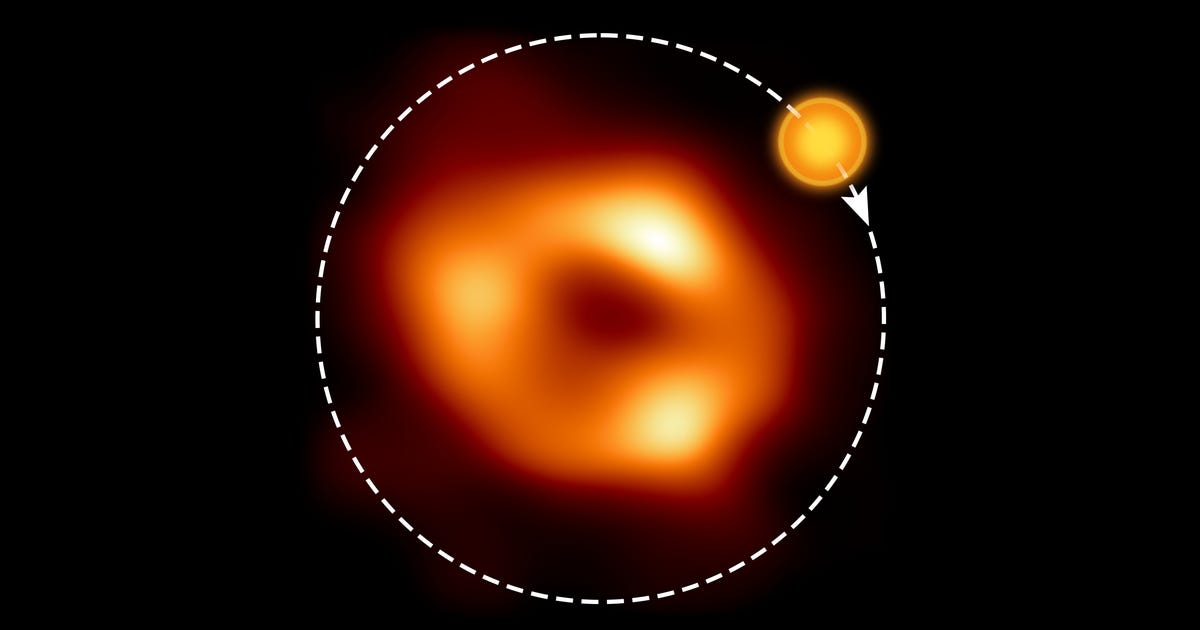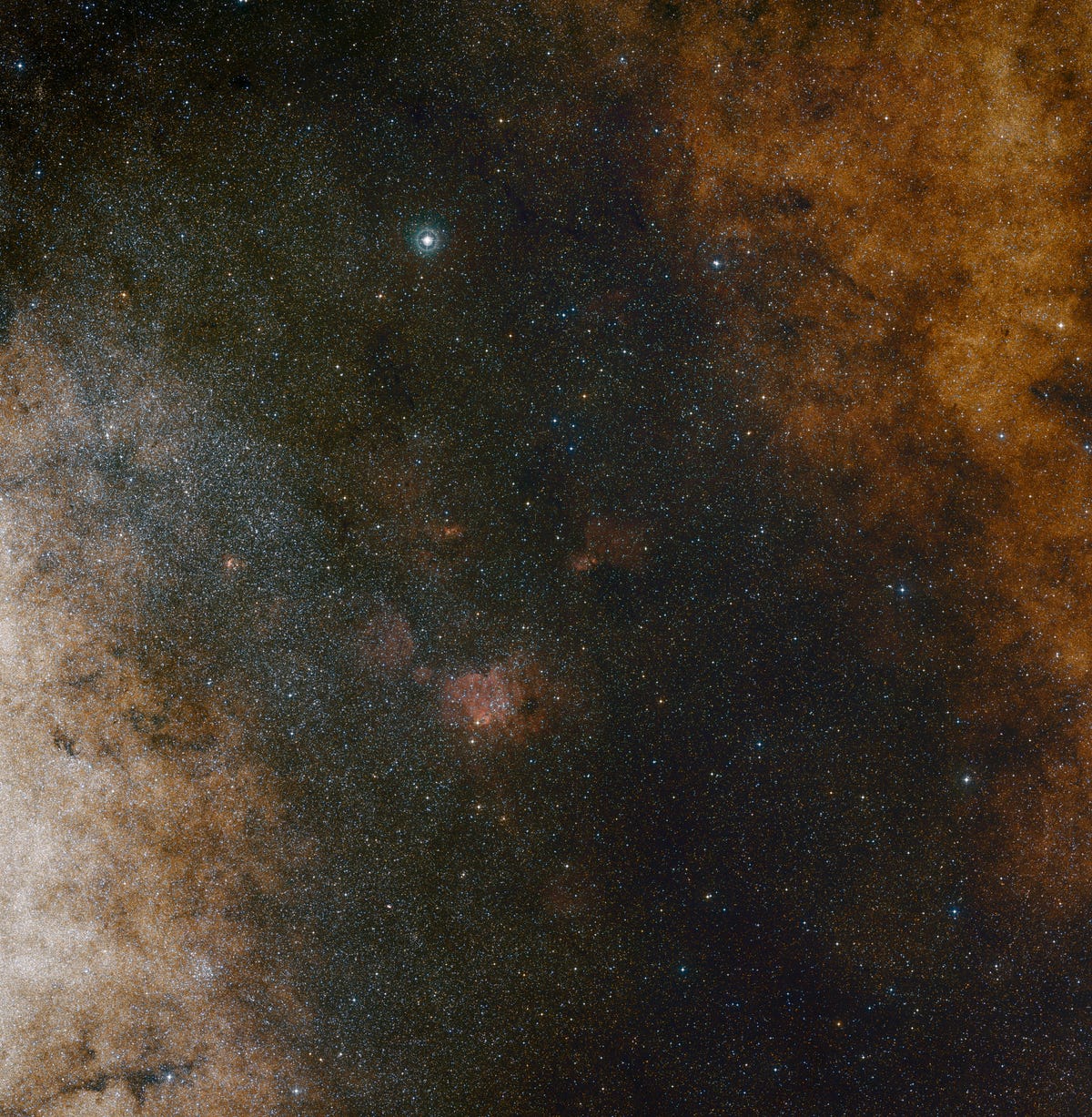
In May, the Event Horizon Telescope Collaboration shocked the world when it released an image of what appears to be a splotchy French cruller on fire. In reality, this wasn’t a doughnut. It was a stunning portrait of Sagittarius A*, the mighty black hole anchoring our galaxy, its gravitational pull silently brushing every star, planet and asteroid within.
This marked the first time we ever laid eyes on her majesty — a tremendous moment in its own right — but scientists weren’t done yet. There was far more to learn from Sgr A*.
From Earth’s vantage point, about 27,000 light-years away from this black hole, astronomers have been vigilantly watching and studying the void in an attempt to decode how, exactly, the Milky Way’s mighty engine works. And last month, a crew working with a powerful radio telescope called the Atacama Large Millimeter/submillimeter Array Observatory gleaned some novel clues.
After checking out ALMA data recorded in tandem with EHT observations of Sgr A*, during the black hole’s monumental imaging procedure, the team spotted what it calls a “hot spot” flitting around the abyss. This spot, they say, seems to be dimming and brightening while traveling clockwise around Sgr A*.
“We think we’re looking at a hot bubble of gas zipping around Sagittarius A* on an orbit similar in size to that of the planet Mercury, but making a full loop in just around 70 minutes,” Maciek Wielgus, of the Max Planck Institute for Radio Astronomy in Germany and lead author of the study published in Astronomy & Astrophysics, said in a statement.
For context, it takes Mercury 88 Earth days to make one orbit around the sun — and, at nearly 29 miles per second, this egg-shaped orb is considered the fastest planet.
So strikingly, for the hot ball of gas to totally make its way around Sgr A* in a mere 70 minutes, Wielgus said, “this requires a mind blowing velocity of about 30% of the speed of light.”
Plus, the researchers believe the bubble’s orbit sits at a distance from the void that’s about five times larger than what’s known as the black hole’s event horizon. Basically, there’s a barrier around every black hole beyond which light can’t escape. It signifies the firm boundary between our visible universe and whatever lies inside the beast. That’s the event horizon.
What’s the story with this bubble?
The study scientists think their newly located hot spot, according to the European Southern Observatory, is associated with bursts, or flares, of X-ray energy emitted from the Milky Way’s center. In fact, such flares have been detected in the past through both X-ray and infrared observations of Sagittarius A*, but this is the first time anyone has discovered them through radio telescope data — and with a “very strong indication” at that.
Possibly, the reason we’re seeing this energetic activity at varying wavelengths — X-ray, infrared and radio — is that their properties are changing over time.
“Perhaps these hot spots detected at infrared wavelengths are a manifestation of the same physical phenomenon: as infrared-emitting hot spots cool down, they become visible at longer wavelengths, like the ones observed by ALMA and the EHT,” Jesse Vos, a Ph.D. student at Radboud University in the Netherlands and co-author of the study, said in a statement.

This visible light, wide-field view shows rich star clouds in the constellation of Sagittarius. It’s pointed in the direction of the center of our Milky Way galaxy.
ESO and Digitized Sky Survey 2. Acknowledgment: Davide De Martin and S. Guisard
Further, findings of the team’s new study also appear to be in line with another long-theorized hypothesis: that flares spit from the Milky Way’s center are rooted in magnetic interactions stemming from hot gas swirling near Sgr A*.
“Now we find strong evidence for a magnetic origin of these flares and our observations give us a clue about the geometry of the process. The new data are extremely helpful for building a theoretical interpretation of these events,” Monika Mościbrodzka, of Radboud University and co-author of the study, said in a statement.
Those interpretations, the team explains, could include a peek into the black hole’s elusive magnetic field as a whole, or insight into the environment around the strange hot spot. Ultimately, perhaps they could paint a picture of what really is going on at the heart of the Milky Way — the quietly chaotic place where a monstrous black hole takes residence.
“In the future we should be able to track hot spots across frequencies using coordinated multi-wavelength observations with both GRAVITY and ALMA,” Ivan Marti-Vidal, of the University of Valencia in Spain and co-author of the study, said in a statement, referring to another of ESO’s astronomy instruments.
“The success of such an endeavor would be a true milestone for our understanding of the physics of flares in the Galactic center.”
